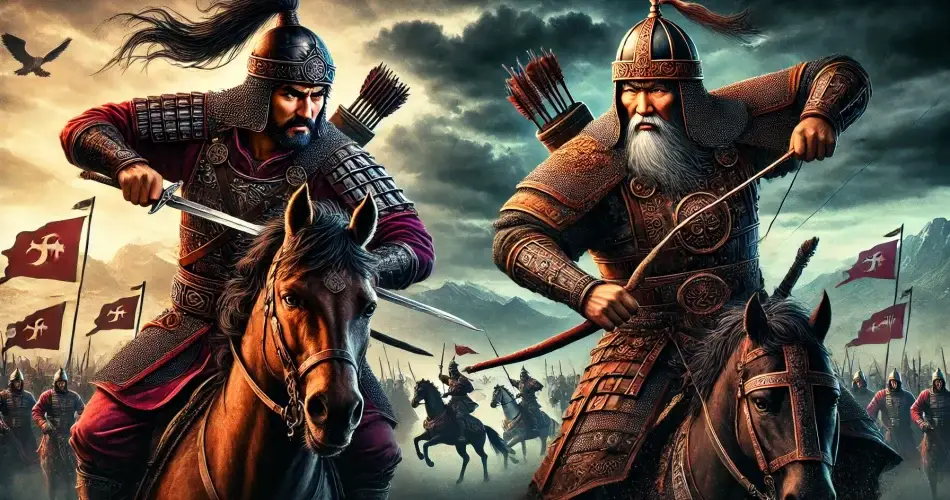Until the emergence and widespread adoption of gunpowder, armies from the Steppe have been a major problem for settled civilizations throughout history. From the Scythians to the Huns and finally to the Mongols, steppe people have always been a significant player on the world stage.
Few leaders have left as indelible a mark on the world as Attila the Hun and Genghis Khan. Emerging from the vast steppes of Central Asia, these two titanic figures forged empires from almost nothing.
But who among these two great men truly deserves the title of the greatest King from the Steppe? In this piece, we compare Attila the Hun Vs Genghis Khan in an attempt to help you reach your own conclusions.
Rise to Power
Attila
Attila was born in the Hunnic Empire around 406 AD. At this time, the Hunnic Empire was a formidable confederation of nomadic peoples known for their exceptional horsemanship and warfare skills.
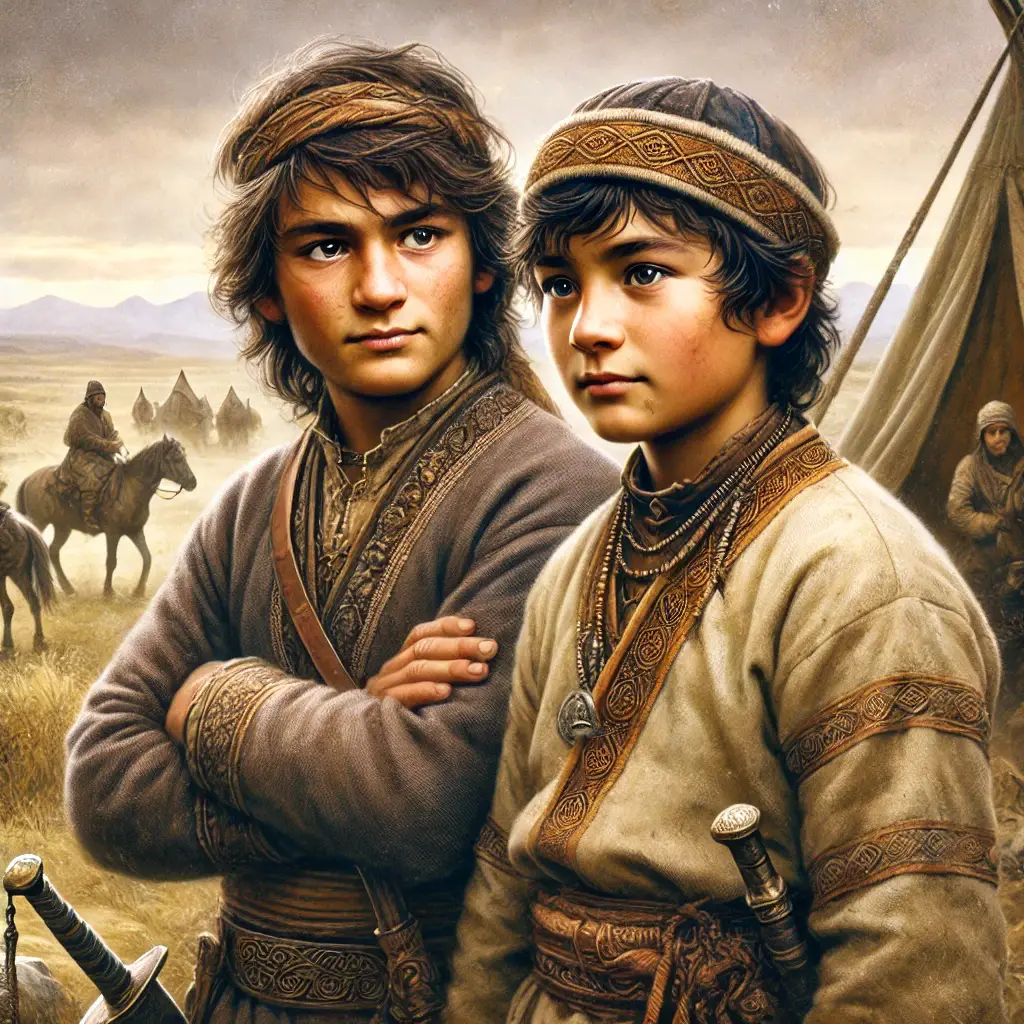
Attila and his brother Bleda were nephews to the Octar and Ruga, who were joint rulers of the Hunnic Empire. Growing up, the two boys received extensive archery, horseriding, and sword fighting training. They also joined their uncles in some of their many military engagements. At the time of Attila’s birth, the western Roman empire was in decline, and the Hunnic tribes had already begun to make their presence felt in Europe. Atilla and his brother also served as mercenaries for the Western Roman Empire early in their military career.
Around 434 AD, Attila and Bleda inherited joint leadership of the Huns after the death of their uncles. Initially, the brothers ruled together and were relatively successful in their campaigns against the Roman Empire. However, In 445 AD, under unclear circumstances, Bleda died, leaving Attila as the sole ruler of the Huns. Some historical accounts suggest that Attila orchestrated his brother’s death to consolidate power, though the exact details are lost to history.
Genghis Khan
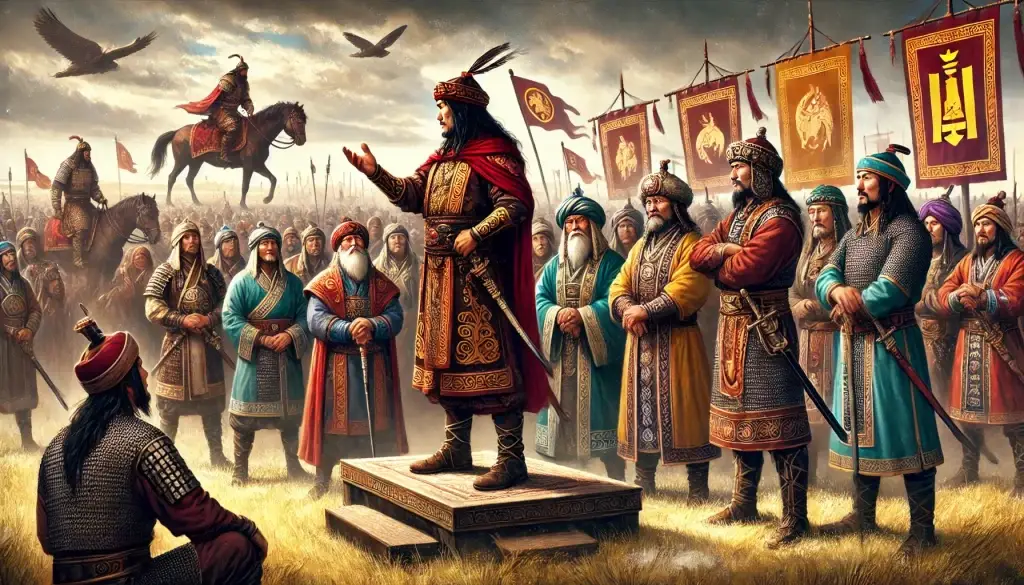
Genghis Khan, known as Temujin during his life, was born around 1162 AD, some 750 years after Attila. While Attila was born around Central Asia and Eastern Europe, Genghis Khan was born in the heart of Mongolia, far to the east of where Attila was born.
Genghis Khan emerged from a world of tribal conflict and harsh survival. Unlike Attila, Temujin’s early life was marked by significant hardships and resilience. Following the assassination of his father, Yesugei, by a rival tribe, Temujin’s family was abandoned by their own clan, leaving them to fend for themselves in the unforgiving landscape.
As a young man, Temujin began to build alliances and unite other tribes of the Mongolian steppes through both diplomacy and conquest. He married Börte, whose family provided crucial support during his rise.
In 1206, after years of relentless campaigning and forging alliances, Temujin successfully unified the Mongol tribes. At a great assembly known as the Kurultai, he was declared Genghis Khan, meaning “Universal Ruler.”
Similarities between Atilla’s and Genghis Khan’s Battle Tactics
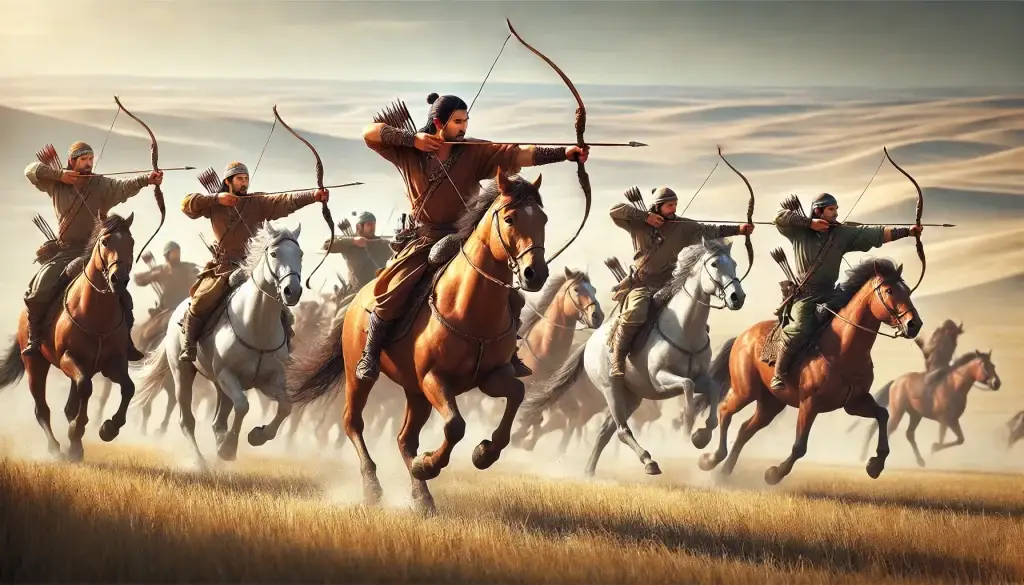
Like all other steppe nomadic armies, Attila the Hun and Genghis Khan’s battle tactics combined expert horsemanship, mobility and range of attack. At the heart of the Steppe nomadic warfare was the horse. Steppe nomads were trained as expert horsemen from a young age, spending much of their lives in the saddle.
The steppe nomads were also masters of the composite bow. This bow was compact, powerful, and capable of shooting arrows over long distances with great force. Even more remarkable was the skill with which the nomads used these bows while mounted. According to stories, nomadic horse archers could hit a bird in mid-air while riding at full speed.
The unique combination of the horse and the bow made the nomads unparalleled mobility and effectiveness on the battlefield. They could cover vast distances, appear in areas where they were least expected, and devastate their enemies.
Another battle tactic common to nomadic armies is the famous feigned retreat tactics. At a pre-arranged signal, the soldiers will disengage and pretend to flee in disarray. When their enemies instinctively gave chase, the fleeing soldiers turned around and attacked the now-disorganized enemy troops. Genghis Khan took this tactic further by preparing new horses for his men to make the counterattack more effective.
Finally, the steppe armies were extremely well coordinated and disciplined. They used a decimal system of organization, with units structured in groups of ten, hundred, thousand, and ten thousand. This system allowed for efficient command and control, even during the chaos of battle. Leaders were chosen based on merit and loyalty, ensuring competent and reliable command structures.
Genghis Khan’s Unique Strategies
The great Khan had an extensive connection of spies that collected, scouted his enemies and provided him with information about their weaknesses and vulnerable positions.
Also, during campaigns, Genghis Khan offered besieged cities the choice to surrender without a fight. Cities that surrendered were spared and incorporated into the empire, while those that did not surrender were captured with force and then put to death.
Geopolitical Rivals.
Attila the Hun
Attila’s initial campaigns were directed against the Eastern Roman Empire. With its capital in Constantinople, the Byzantine Empire was a formidable force with significant military and economic resources.
Attila repeatedly defeated the Eastern Romans in battle and threatened Constantinople itself, forcing the Byzantines to pay vast tributes in gold to the Huns. Turning his attention westward, Attila also devastated the Western Roman Empire, which was even more vulnerable than its eastern counterpart.
Around 440 AD, Attila and his Hunnic forces turned their attention towards the Sassanid Empire in Persia (modern-day Iran). The Sassanid army was well-versed in defending against nomadic incursions. Details about this campaign are sparse, but it is clear that the Sassanids mounted a successful defence, preventing Attila from achieving a decisive victory or significant territorial gains in Persia.
Besides the Roman forces and the Sassanids, Attila also fought against various Germanic tribes, including the Visigoths, Ostrogoths, and Franks.
Genghis Khan’s Geopolitical Rivals
Initially, Temujin’s greatest challenge was uniting the fractious Mongol tribes who were in a constant state of war. It took the great military leader more than two decades of alliance, violence, and political maneuvers to finally complete this great task.
After consolidating his power among the Mongols, Genghis Khan turned his attention to the sedentary civilizations of China. The Western Xia Dynasty and the Jin Dynasty were his primary targets. In 1211, he launched a series of campaigns against the Jin Dynasty, eventually capturing its capital, Zhongdu (modern-day Beijing), in 1215.
The Southern Song Dynasty, though not directly conquered by Genghis Khan, also faced pressure from the Mongols. The complete conquest of the Song Dynasty would be carried out later by Genghis Khan’s successors, particularly his grandson Kublai Khan, who established the Yuan Dynasty in China.
One of Genghis Khan’s most significant and challenging campaigns was against the Khwarezmian Empire in Central Asia. Genghis Khan’s invasion was prompted by the betrayal and execution of Mongol envoys, leading to a devastating and relentless campaign that demonstrated his unmatched strategic and military capabilities.
In the early 13th century, Genghis Khan dispatched a scouting party to Europe led by two of his most trusted generals, Subutai and Jebe. In 1223, the Mongol scouting party approached the borders of the Kyivan Rus’, a loose federation of Slavic principalities. A conflict soon broke out, culminating in the Battle of the Kalka River, where the Rus’ coalition was utterly defeated, and many of its leaders were captured or killed.
Foreign Policies of Attila the Hun Vs Genghis Khan
Attila the Hun leveraged the fear of his formidable Hunnic forces to extract tribute from the Roman Empire and other neighbouring states. He would launch raids into Roman territories and force them to pay large sums to avoid destruction.
On the other hand, Genghis Khan was an empire builder and was more open to diplomatic solutions as long as it served his long-term goals. He sent envoys to establish trade relations, gather intelligence, and propose alliances. War was another way for the Great Khan to achieve his long-term goals. It was only when diplomacy failed, such as with the Khwarezmian Empire, that he resorted to war with devastating effectiveness.
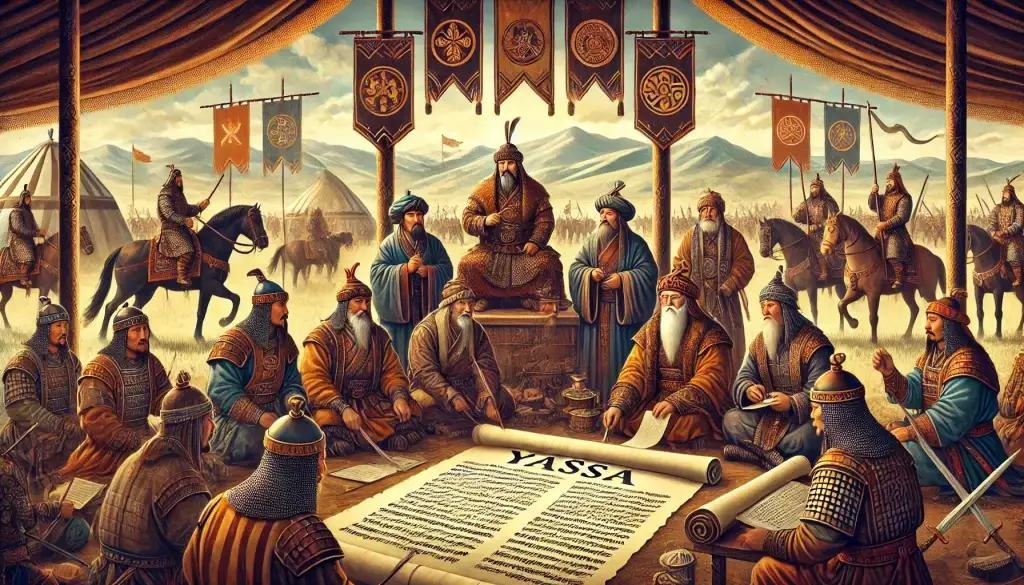
Genghis Khan also allowed conquered peoples to retain their local customs and leaders as long as they pledged loyalty to him. This approach facilitated smoother governance and reduced the likelihood of rebellion. He was pragmatic in his use of local administrative structures and often appointed capable individuals from diverse backgrounds to key positions.
Genghis Khan implemented legal and administrative reforms that allowed him to maintain control over his rapidly increasing empire. Central to these legal reforms were the Yassa laws, a code of laws that applied to all subjects, ensuring a degree of order and justice.
Death
Atilla the Hun
Attila the Hun died under somewhat mysterious circumstances in 453 AD. Gothic historian Jordanes and the Roman historian Priscus provide the most commonly accepted account of his death.
According to these accounts, Attila died on the night of his wedding to a young woman named Ildico. After a night of heavy drinking and celebration, Attila retired to his bed chamber with his new bride. The next morning, his attendants found him dead. It appeared that he had suffered a severe nosebleed, which caused him to choke on his own blood while he was in a drunken stupor. Attila died at the age of 46.
While this is the most widely accepted version of events, there have been various other theories and speculations about his death. Some historians suggest that he might have suffered from a burst blood vessel or an aneurysm, leading to the fatal nosebleed. Others have speculated that he might have been assassinated, either by his new bride, Ildico, or by political rivals within his own ranks, although there is no substantial evidence to support these theories.
Genghis Khan
Like Atilla, Genghis Khans’ death is also shrouded in mystery and controversy. One widely accepted theory is that Genghis Khan died from injuries sustained during a fall from his horse. Given the nature of his continuous military campaigns, it’s plausible that an accident could have caused serious injuries, leading to his death.
Another account suggests that he may have succumbed to wounds received in battle. Some sources, including the “Secret History of the Mongols,” mention that he was injured during the siege of the Western Xia capital.
Conclusion
While these two nomadic steppe kings lived some 750 years apart, there is no doubt that they were both visionary and charismatic leaders. However, Genghis Khan united the Mongol tribes and created the largest contiguous empire in history. His innovative military strategies and governance transformed the Mongols into a dominant force, leaving a lasting legacy. Attila, though formidable, didn’t achieve the same breadth or impact on world history.
Do you agree? Let us know in the comments.
